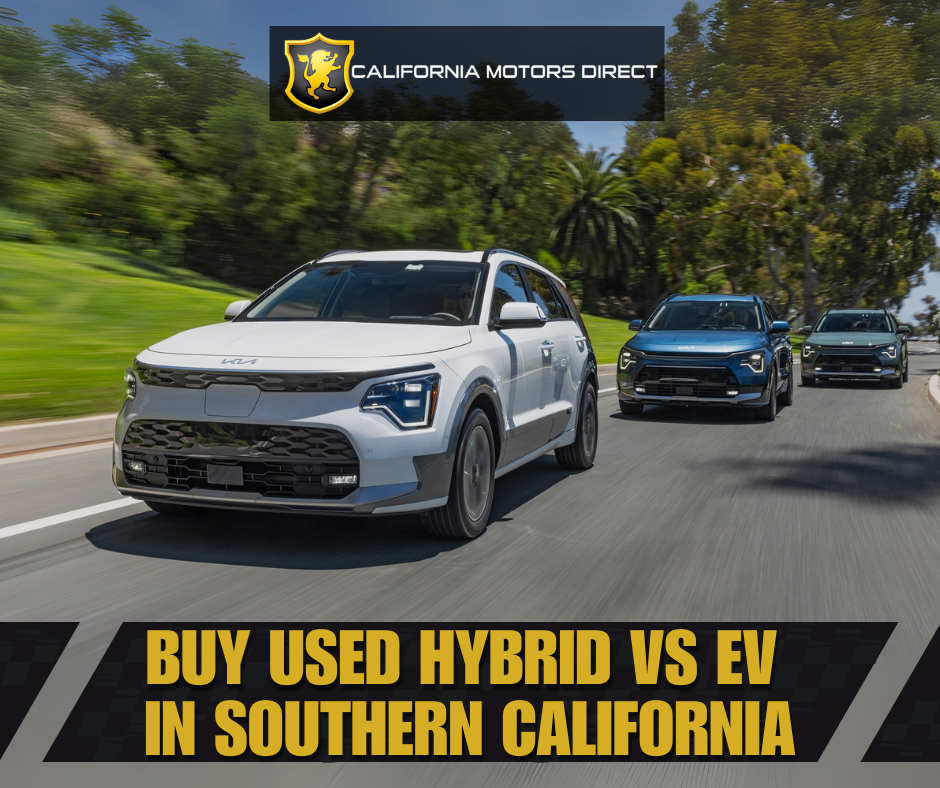
Southern California is one of the most exciting car markets in the country. With high fuel prices, strict emissions standards, and the state’s transition toward clean energy, many drivers are asking the same question: is a used hybrid or used EV the smarter buy?
The truth is both options have their advantages, and the right choice depends on how you drive, where you live, and whether you have access to charging. Let’s break it down.
🌞 WHY SOCAL IS UNIQUE
California’s mix of policies, infrastructure, and lifestyle makes owning an electrified vehicle much more practical than in other states.
- Fuel Prices: Gas prices are consistently among the highest in the U.S. (often $1.50–$2.00 higher per gallon than the national average). Hybrids and EVs save SoCal drivers thousands annually.
- Traffic Conditions: Stop-and-go commutes favor hybrids (regenerative braking = better MPG) and EVs (max efficiency in low-speed traffic).
- Environmental Policies: California enforces strict emissions standards and is phasing out new gasoline car sales by 2035. Used EVs and hybrids will likely retain long-term demand in SoCal as clean transportation becomes mandatory.
- Charging Growth: California leads the U.S. with more than 178,000 charging ports, and more are added each year.
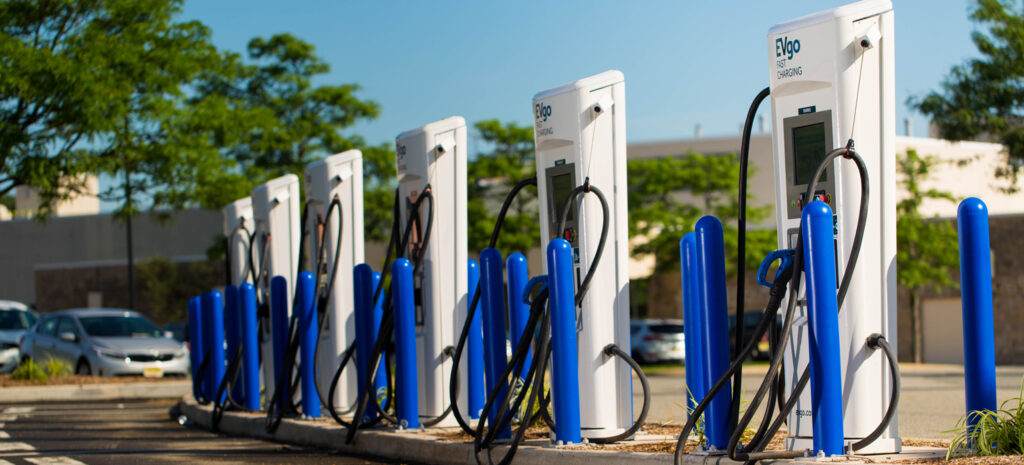
This means whether you choose a hybrid or an EV, you’ll benefit more in Southern California than in most other regions.
💰 INCENTIVES THAT CUT THE COST
The financial side is where EVs really shine in SoCal, thanks to stackable incentives.
Federal Used EV Tax Credit:
- Up to $4,000 off or qualifying EVs/PHEVs or 30% of the purchase price.
- Qualifying used EV must be:
- Purchased from a dealer (not private sale).
- Priced under $25,000.
- Model year at least 2 years older than purchase year.
- Buyer must meet income limits ($75k individual / $150k married).
- The best part: since 2024, this credit can be transferred to the dealer for an instant discount off the purchase price.
Southern California Utility Rebate:
- Southern California Edison (SCE): $1,000 standard rebate; up to $4,000 for income-qualified buyers.
- LADWP (Los Angeles): Up to $4,000 for qualifying used EVs. In some cases, when stacked with federal credits, buyers report savings of $6,000–$8,000 on a single purchase.
Replace Your Ride (Income-Qualified Programs):
- Grants of $7,000–$12,000 to scrap an older vehicle and replace it with a hybrid, PHEV, or EV.
- Includes additional support like $2,000 for home charging installation.
- Funds are limited, so these programs open/close based on budgets.
For EV buyers, these rebates can reduce costs by 30–50%, making used EVs a much stronger financial case.
💡 Contact us today to learn more about our incentive offers.
🔋 EV BATTERY HEALTH: WHAT YOU SHOULD KNOW
Battery life is the #1 worry for used EV shoppers, but most fears are outdated.
On average, EV batteries lose only about 1.5–2% of capacity per year. In SoCal’s climate, this means a five-year-old EV may only lose 25–30 miles of range.
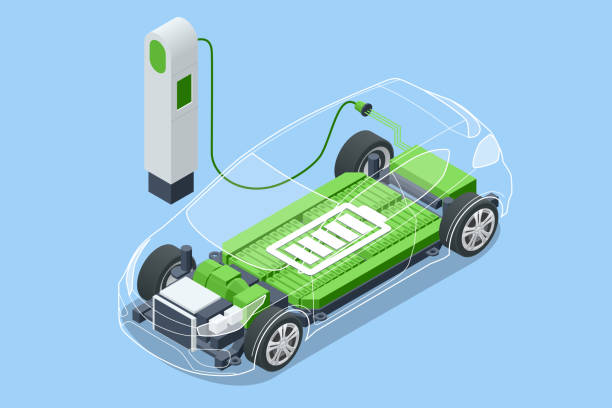
Warranty and Regulation:
Warranties provide consumers with peace of mind. Most EVs come with 8-year/100,000-mile battery coverage, while Toyota and Hyundai extend some hybrid and PHEV battery warranties up to 10 years/150,000 miles.
California’s new rules give EV shoppers more confidence than ever. Beginning with 2026 models, electric vehicles must keep at least 70% of their battery capacity for 10 years or 150,000 miles. Starting in 2030, that standard rises to 80%. In simple terms, newer EVs are built to last longer—and these protections will benefit buyers in the used market too.
💡 Pro Tip for Buyers: Ask for a battery health report (many EVs track state of health in software), and run a long highway test with A/C on to see real-world range.
RELIABILITY: HYBRID VS EV VS PLUG-IN HYBRID (PHEV)
When it comes to dependability, not all powertrains are equal.
Hybrids: Proven and Predictable
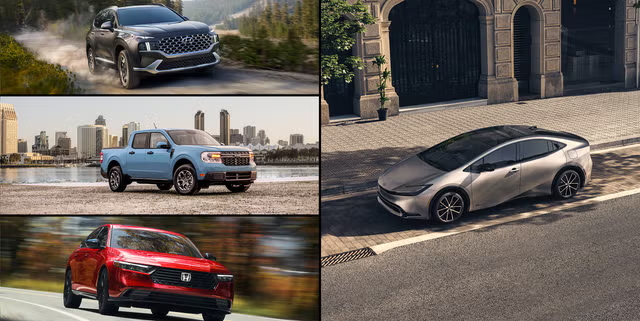
Hybrids have been on U.S. roads for over 2 decades and are known for their long-term durability. The Toyota Prius, for example, often runs past 200,000 miles with just routine care. Today, brands like Toyota, Honda, and Ford have refined hybrid systems so well that failure rates remain very low.
- The gasoline engine handles most of the heavy lifting, so the smaller battery is less stressed compared to a full EV battery.
- Hybrid batteries are air-cooled and built for longevity, and replacement costs have dropped significantly in the past decade (often $1,500–$3,000 today).
- Consumer Reports consistently ranks hybrids like the Toyota Prius, Honda Accord Hybrid, and Lexus ES Hybrid among the most reliable vehicles overall.
- Explore more on why Hybrids are the smart choice in SoCal.
👉 For drivers who want peace of mind, hybrids are the most proven option with the lowest ownership risk.
EVs: Simpler Mechanics
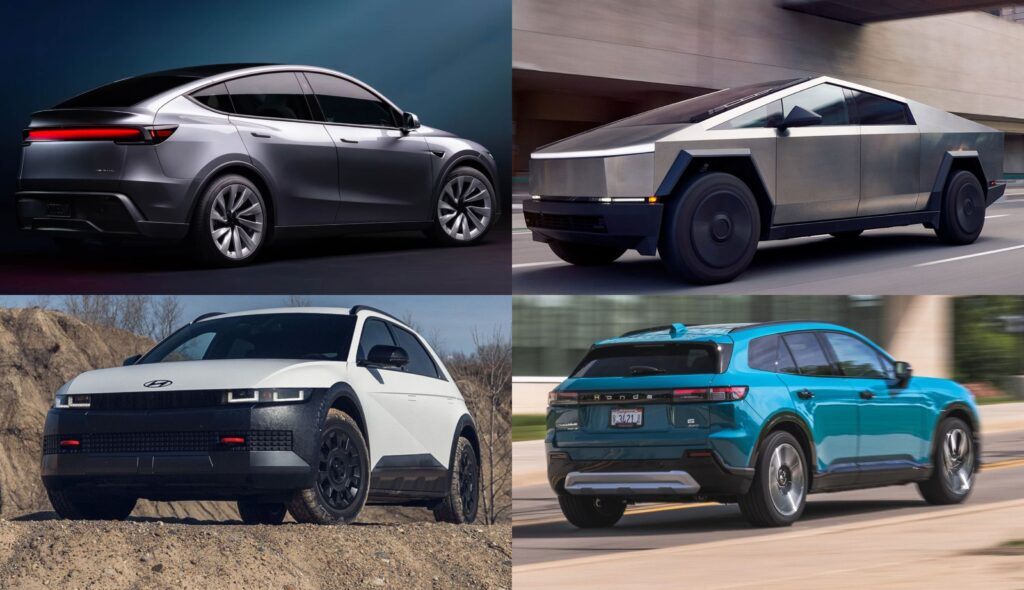
EVs, in theory, should be more reliable because they have far fewer moving parts. There are no oil changes, timing belts, or exhaust systems, and regenerative braking means brake pads last longer. For many owners, that translates into lower maintenance costs year after year.
However, because EVs are still relatively new, reliability studies show mixed results:
- Early EVs like the Nissan Leaf and Chevy Bolt had more issues with battery degradation and recalls, especially around fast charging and thermal management.
- Newer EVs (Tesla Model 3/Y, Hyundai Kona EV, Kia EV6, etc.) show better long-term battery performance, but may experience software glitches, touchscreen malfunctions, or problems with advanced driver assistance systems.
- Repair costs can be higher due to specialized parts and limited availability of trained technicians, though routine upkeep is minimal compared to hybrids or gas cars.
👉 If you can tolerate occasional tech hiccups, an EV will still save you money over time due to lower maintenance and fueling costs.
PHEVs: Twice the Systems
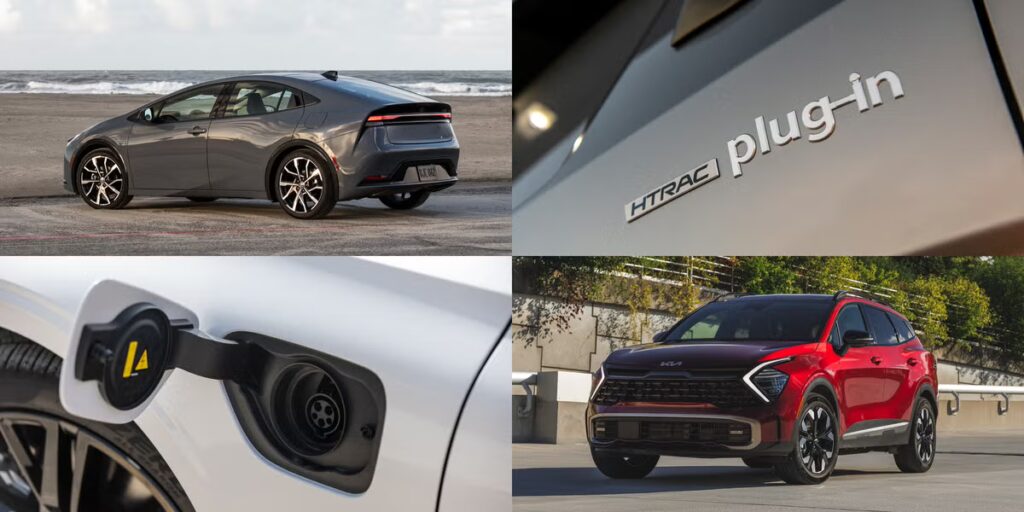
Plug-in hybrids (PHEVs) combine a full hybrid system with a larger battery and plug-in charging capability. While they offer flexibility—electric miles for short trips and gas backup for longer ones—this dual nature can impact reliability.
- Two drivetrains to maintain: a gas engine plus a larger EV system, meaning more parts that can fail.
- Battery use is higher than a traditional hybrid, so range degradation over time is more noticeable.
- Consumer surveys often rank PHEVs as less reliable than both hybrids and EVs because of this added complexity.
👉 PHEVs can be a sweet spot if you want both gas and electric flexibility, but they typically come with the highest risk of repairs out of the three.
OWNERSHIP COSTS
Even with incentives, EVs and hybrids come with unique costs:
- Annual EV Road Improvement Fee: About $100/year on EV registrations in CA.
- Insurance: EVs can carry higher premiums (due to parts/repair costs) , while hybrids usually cost about the same as gas vehicles.
- Fuel vs. Charging:
- Home charging = ~$0.15–$0.25 per kWh (often cheaper with time-of-use rates). That’s the equivalent of paying $1–$1.50 per gallon.
- Gas in SoCal = often $5–$6 per gallon. Hybrids mitigate this but can’t compete with home-charged EV costs.
- Hybrids improve MPG significantly, but EVs still win on fuel cost if home charging is available.
DAY-TO-DAY LIFE: WHICH FITS YOU BETTER?
Think about your lifestyle before deciding:
Used Hybrid: 🚙
- Ideal for renters without home chargers.
- Simple, reliable, and less expensive to maintain.
- 40–55+ MPG in LA traffic saves hundreds monthly.
🚨 Browse our inventory of 100+ hybrid vehicles.
Used EV: ⚡
- Perfect if you own a home or have charging access.
- Lowest operating costs (fuel + maintenance).
- Best option for budget-savvy buyers who take advantage of rebates + depreciation discounts.
🚨 Shop our EV lineup and choose from more than 20 vehicles.
Used PHEV: 🔌
- Great compromise: electric miles for local errands + gas backup for road trips.
- Best if you can charge at home but still want flexibility.
- Just note: less reliable than hybrids, but more flexible than EVs.
🚨 View our PHEV inventory of 20+ vehicles.
⭐ BOTTOM LINE
Southern California offers the perfect environment for both hybrids and EVs. If you live in an apartment or rent without charging access, hybrids will save you the most headaches. But if you own a home or have consistent charging access, a used EV will outperform a hybrid in cost savings, especially with today’s rebates, steep depreciation, and California’s supportive policies.
👉 Either way, you’ll save money compared to a traditional gas car—and contribute to cleaner air in one of the country’s most congested regions.



